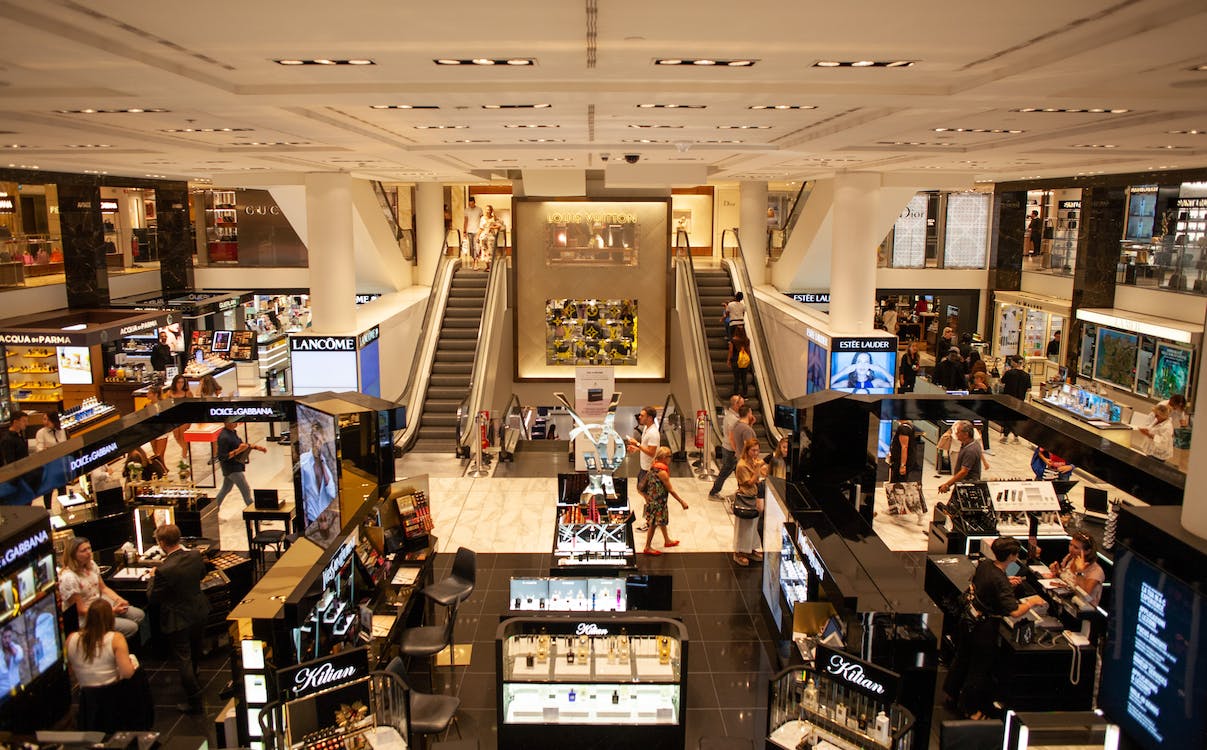(Image courtesy of Tuur Tisseghem on Pexels)
From the perfect teenage hangout, to being destroyed by Covid-19 and the online world, what happened to mall culture?
Shopping: it’s universal, everyone does it in some capacity. Whether you need a couple things in the grocery store, or you want to let off some steam on some new clothes and accessories, that’s when you shop.
Of course, we live in the age of the internet where online shopping has become more profitable than ever before (and that’s its own separate issue).
But how was it when online shopping wasn’t the hottest way to shop? Well, there was the mall.
Malls used to be a massive staple in American living, it even sprawled into its own unique culture- simply called “mall culture,” and it was incredibly popular. Especially in the 1980’s and the 1990’s, hitting its peak in the early 2000’s.
However, malls seem to have decreased in popularity in recent years. According to californialocal.com, “There were 1,500 malls in 2005, 1,150 in 2022. That’s a drop of about 23 percent, albeit over a 17-year, rather than a five-year, period.”
This brings up a major question: Is there even an audience for malls anymore? If all these malls are closing down, is mall culture considered dead now?
Well, that’s complicated. However, we need to figure out how this massive culture even started in the first place.
Although open air shopping centers have been a thing since the concept of the Middle East’s marketplaces and bazaars, America’s first attempt was a shopping arcade in Rhode Island.
Then, in 1954, open air shopping centers spread everywhere in America and it came from the mind of Viennese architect, Victor Gruen. Well, that’s the name he called himself in the U.S. at least; his real name was Viktor Grünbaum.
Gruen immigrated to the U.S. during World War II in 1938. After that, he was hired to design storefronts at Fifth Avenue in New York City, which then spiraled into Gruen to start a new project: the first ever American mall.
Keep in mind: when Gruen immigrated to New York, he only had eight bucks to his name, and didn’t speak any English. Yet he made something that would revolutionize American consumerism and culture forever, despite his intentions.
In 1956, he designed and opened the Southdale Shopping Center in Edina, Minnesota. It was a two-story building, complete with multiple connecting escalators, and a full courtyard covered by one roof.
This mall, smack dab in the middle of the Minnesota suburbs, became a massive success, to the point where it became almost as big as Disneyland- in terms of the immaculate press it received.
The way Gruen saw it; it was like a center of community. According to him, the mall would be someplace special- “the third place” sociologists would call it. Something that wasn’t work or home, where people could socialize and hang out.
However, that’s not exactly how it spiraled to be.
Before the production of Gruen’s mall, there were loads of other malls, but none indoor and akin to Gruen’s design. But when his mall blew up the way it did, roughly 240 indoor malls went up by 1970.
Californialocal.com has written a whole article about the main history of the mall, and also brought in some good insight from Gruen himself about his grand invention. His words read as follows:
“I am often called the father of the shopping mall. I would like to take this opportunity to disclaim paternity once and for all,” Gruen said in 1978, two years before he died at age 76. “I refuse to pay alimony to those bastard developments. They destroyed our cities.”
So, did malls destroy our cities? Well, who’s to say? But what we do know is the impact of the mall- and it was massive.
What started as a simple place for communities to hang out, became a teenage hangout by the dawn of the 1980’s, and this was when mall culture started to develop.
Things such as the copious amount of entertainment, shops, and food courts are the key to the basic mall. Everything else is almost secondary. On average, there’s a general lack of problems in the average mall as well.
Most malls have massive parking lots, this was supposed to reduce struggles with parking. That’s because they’re made to satisfy the customer for the prime experience.
However, the peak of the mall hit in the 2000’s. While the movies from the 1980’s (such as Fast Times At Ridgemont High and Mallrats) kicked the mall more into the limelight, the new century was the best for the American mall.
But as the saying went, “hindsight is 20/20,” so how are malls holding up now?
Along with the mall in the 1990’s, a small new invention was being brought into the world, that being the internet. And by 2020, the COVID-19 pandemic shut everything down, including malls.
During this time, online shopping grew immensely popular, only because there wasn’t any other way to shop otherwise. But it somewhat stuck, because of its convenience.
Of course, malls are still around. It wouldn’t make sense to get rid of an American staple in its entirety. However, in recent years, it feels different- and those are considered dead malls. The number of dead malls have been increasing as of late, mostly due to the lack of anchor stores keeping them in business.
A good chunk of these malls have either been abandoned (such as the Cincinnati Mall in Ohio, Carousel Mall in San Bernardino, California, and Northridge Mall in Milwaukee, Wisconsin) or straight up demolished (like the Dixie Square Mall in Harvey, Illinois and Niagara Square in Niagara Falls, Ontario).
Now that dead malls are taking the place of these shopping communities, are there any alternatives to the mall? Sadly, not really, especially in terms of teen hangouts.
According to qz.com, they’ve reported on the teen demographic of malls, and how it’s decreased over the recent years. From them, it reads,
“Teen mall traffic has declined by 30% over the past decade, according to Piper Jaffray’s 27th semi-annual study into teen behavior (which incorporates a survey of nearly 7,500 teens). Teens averaged 29 visits to the mall in the year to spring 2014, compared to 38 visits in 2007.”
Dead malls are becoming more of a reality, teens (the main core demographic of malls) don’t find the mall desirable anymore, and the rise of the internet and online shopping have become almost a triple threat in replacing the mall.
However, this isn’t to say that malls have no future. With COVID-19 restrictions being lifted with time, people are determined to get out in the world more. Malls are one of those places people want to experience again after such isolation.
Maybe soon, malls can have a big boom again, possibly hit a new peak like they did in the early 2000’s. But who really is to say?



